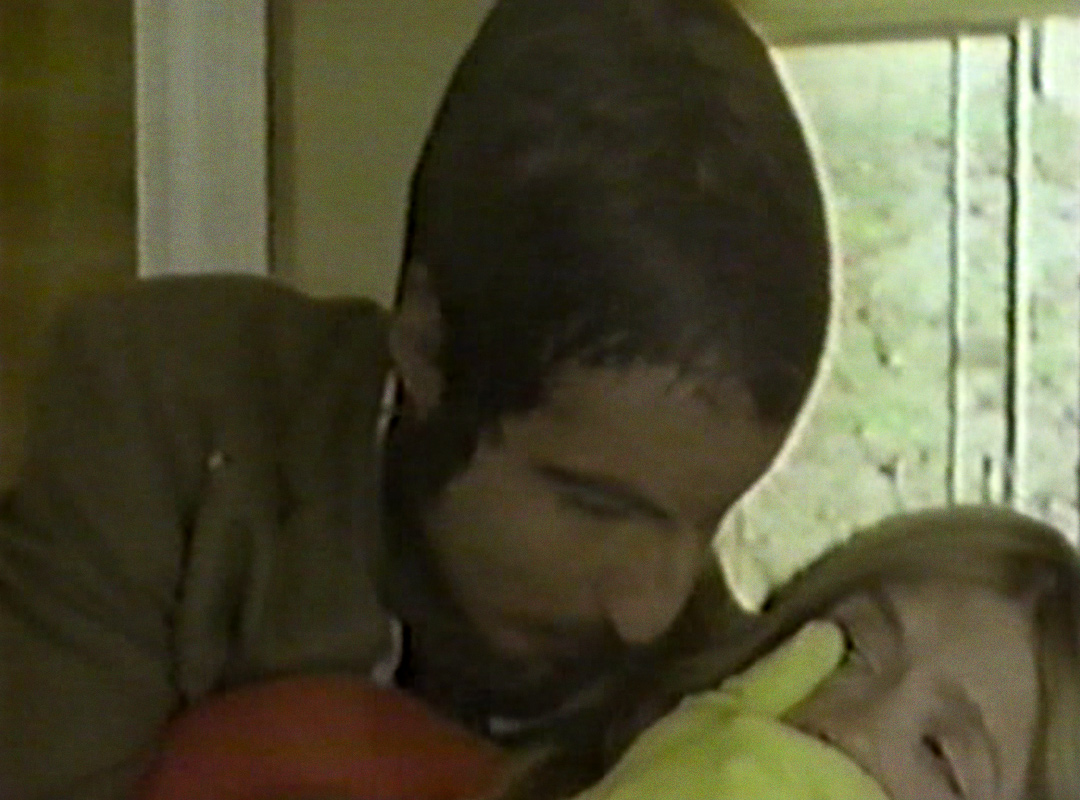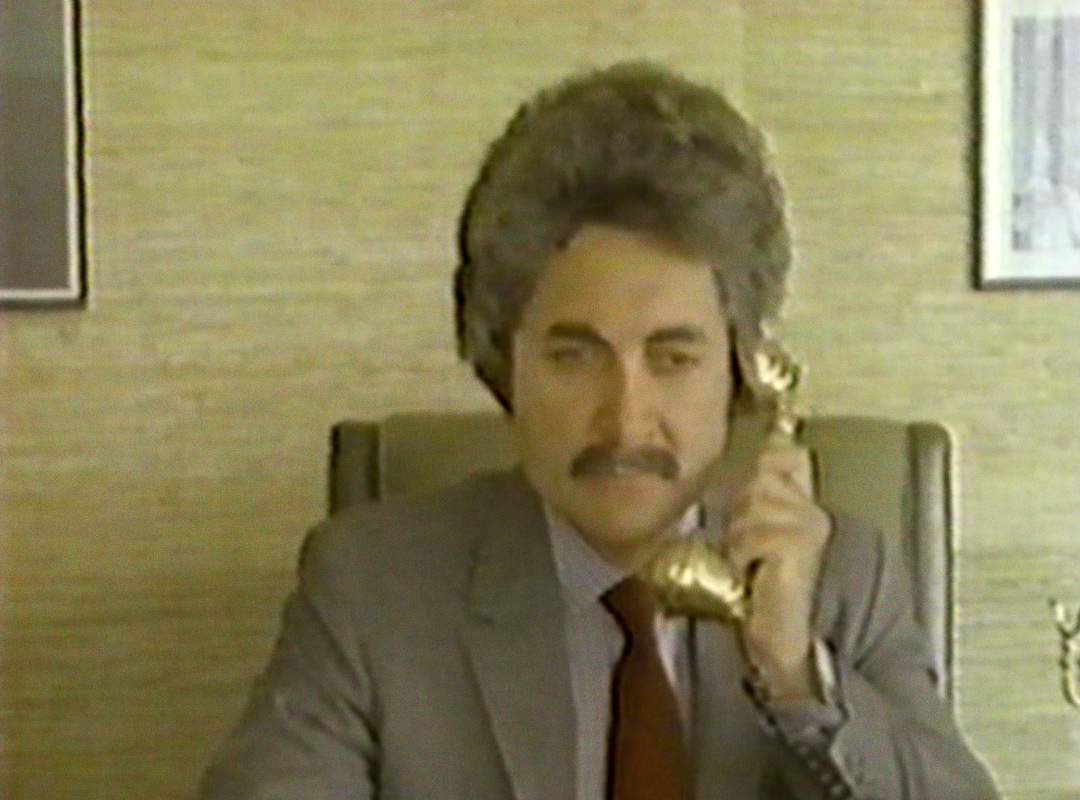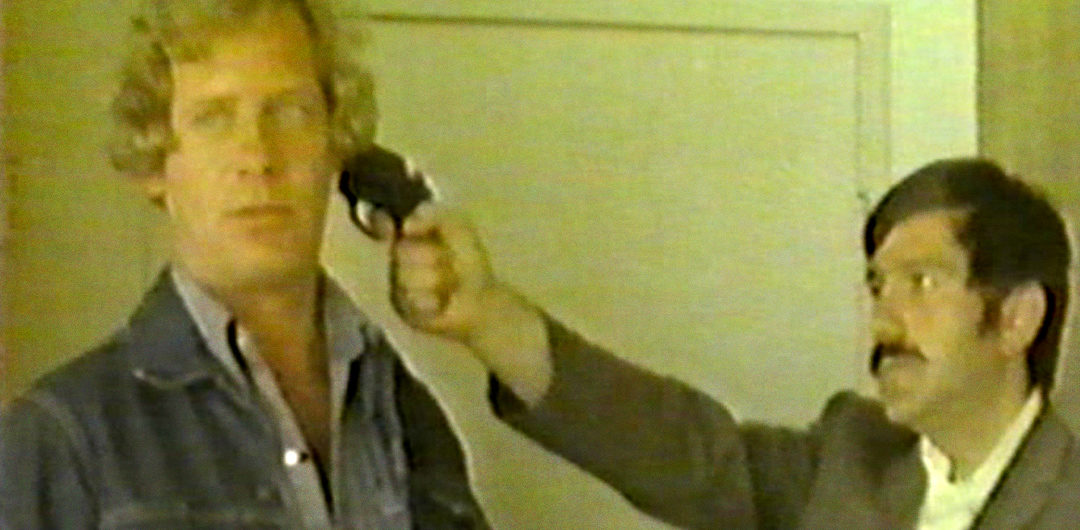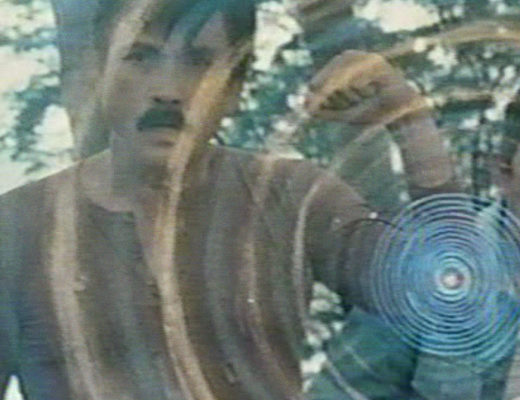As human beings, we tend to find comfort in shared experiences. No one grasps this spark of wisdom more than Nick Millard — that’s why he removed most of the mouths from .357 Magnum.
By now, the entire world should be predisposed to the anomalous junk-stylings of Nick Millard aka Nick Philips aka My Favorite Dissident. Prolific, hermetic, and emphatic in his quest for onscreen kinks, Millard has spent the last 40 years quietly churning out disconnected trash which few people understand, let alone attempt to understand. In a sense, that’s what makes his work so appealing. That, and the fact that none of his films exceed 70 minutes. Like Daniel Johnston’s songs and Kenneth Patchen’s fictions, Nick’s methodology rejects convention and the world-at-large, ensuring an experience which only he (and he alone) can offer. It’s special. And privileged. That said, .357 Magnum features a lot of implausible gun handling, an unrelated five minute scene of a leather-clad woman orally pleasuring a vibrator (while an anonymous woman films it), and a cameo from Crazy Fat Ethel aka Crazy Fat Edith herself.
It’s magnificent.
.357 Magnum is like a brush fire, erupting so quickly and haphazardly that the net result is almost too hot to handle. There’s a man in the Angola jungle. He shoots two other men. Cut to: our hero, Johnny Hightower, nursing a wounded hand in the hospital. J.H. was not in the previous scene. Hong Kong. A man with a beard and a Magnum walks around. Johnny leaves the hospital, kisses up on some boobs, then goes to Tuscon. We see an exterior of the San Francisco airport. Hightower meets with the main vampire from Satan’s Black Wedding and receives an assignment to dispose of “Clay” (the guy with the beard). An old man talks on the phone. More Hong Kong scenery. John hires a boozed-up sidekick, Steve, for the mission. They shoot quarters and dishware with their guns. Cocaine. The house from Criminally Insane. Ethel. The house (and doctor) from Death Nurse and Death Nurse 2. House-invaders in stocking masks. Blood bursts. Death. Death. Vibrator. Death. Tokyo?
That’s what we have to work with. And if this film were realized with any pretense of normalcy, what we have to work with would most likely be dead boring. Sometimes it can be. But like Millard’s later Death Nurse, Magnum excels in presenting everyday gestures as alarmingly bizarre, anti-human events, making our engagement inevitable. Millard’s creative process is in full effect. Thus, as Hightower points out, “You’d better pin your fuckin’ ears back!”
From minute one, this film is an onslaught of madness. Entire conversations are shot in ping-pong close-ups, yet mostly composed without the benefit of mouths. Half-second edits perpetually hammer away, while soundtrack cues consisting of either a sole organ drum box, dusty acoustic guitars, eastern-flavored library music, or sparse jam-band improvs clang on. Mismatched sound effects sever in mid-stream. Hilarity arrives in the form of Johnny and Steve’s multiple shooting/male bonding scenes. Through all of this, everyone is earnestly dedicated and determined, as if they were living through the final 65 minutes of their lives. And perhaps, they were. For who’s to say that Millard’s particular take on reality is any less significant than our own? The only difference is that his was caught on film. Thank god.






